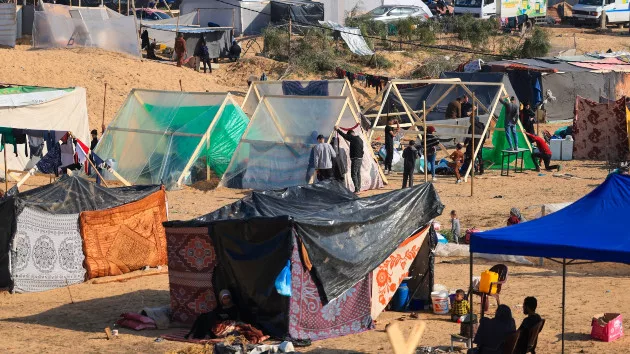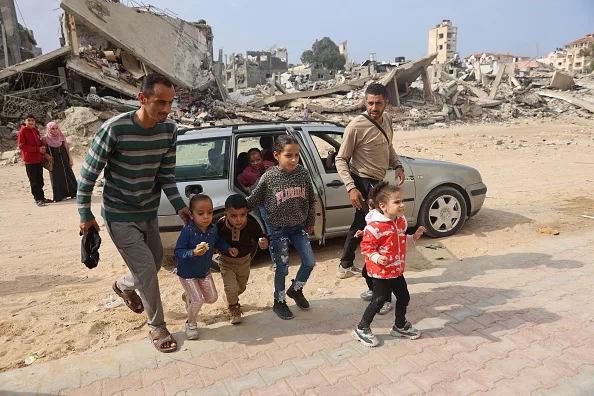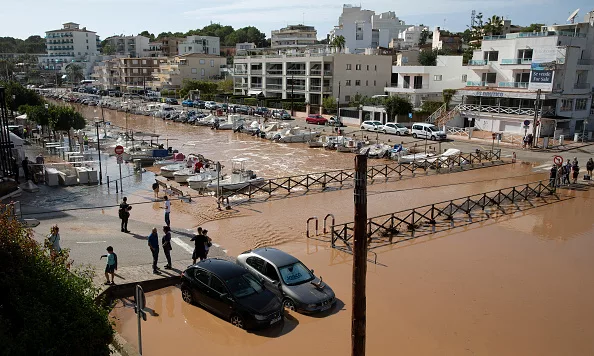(NEW YORK) — After seven days without bombardments, Palestinians in the Gaza Strip woke up to the familiar sound of airstrikes in the early morning of Dec. 1.
“The war is back,” Shaimaa Ahmed, a 20-year-old engineering student, told ABC News.
“We woke up to the sound of gunfire. Ship fire. Tank fire. They’re firing from everywhere. It’s continuous and strong,” Ahmed, who had already fled her house on Oct. 31 following the orders of Israel to evacuate northern Gaza, said. “I feel like I’m being suffocated again.”
Israel resumed its retaliatory military operations in Gaza last week after the collapse of a temporary cease-fire as part of a broader hostage-prisoner exchange with Hamas. With thousands forced to flee again, some Palestinians told ABC News the war has resumed at an unprecedented pace and intensity.
New evacuation orders on Sunday left thousands to face another displacement in a desperate search for safety.
“The roads leading south towards Rafah [on the border with Egypt] are clogged with cars and donkey carts packed with people and their meager possessions,” the director of the United Nations Relief and Works Agency Affairs, Thomas White, wrote on X.
Almost two months in, the Israel-Hamas war has left at least 15,899 killed and 42,000 wounded in the Gaza Strip, according to Gaza’s Hamas-run Ministry of Health. In Israel, at least 1,200 have been killed and 6,900 injured, with 136 Israeli hostages still in Gaza, according to the Israel Defense Forces.
As the IDF moves forward with a ground operation in southern Gaza in what Israeli Rear Adm. Daniel Hagari defined “a new phase in our war against Hamas,” Palestinians said there is nowhere to go for safety. Some 1.9 million are currently displaced and moving across the Strip, according to UNRWA.
“What’s the next step? Is it Sinai or is it heaven? I have no idea,” 21-year-old Tala Herzallah told ABC News as she prepared to flee again on Saturday, after having evacuated her home in Gaza City a few weeks ago.
The IDF leaflets dropped in Khan Younis during the weekend warned people to leave the area and a QR code map showed the zones designated as safe by the IDF.
“We want civilians not to be in the area where we are fighting,” Israeli Lt. Col Jonathan Conricus told ABC News Monday. “We want to focus our firepower on Hamas and Hamas only.”
“Where to go after Khan Younis? There is only one place and it’s Rafah and it cannot include 2 million people,” 24-year-old Younes El-Hallaq told ABC News. “And more importantly, Rafah itself is being targeted.”
In the four days following the end of the cease-fire, 746 have been killed in the strikes, according to the Hamas-run Gaza Health Ministry, with victims in Rafah, too.
“Even in Rafah where people are being forced to flee the sound of airstrikes punctuate the day,” White wrote on X Monday.
While many have relocated over the weekend, others have decided to stay where they are either by choice or forced to do so by illnesses, disabilities or lack of accommodation and transport options.
“Since the beginning of the war, I have been displaced three times, and now I may go to another place,” Rasmiya Rabie, 51, from the town of Al-Qarara, north of Khan Yunis, told ABC News.
Rabie said her family received many calls from the Israeli army telling them to move to different areas.
“We are a large number and we cannot displace again,” she said.
Then, two days ago, a night of severe bombardment changed their mind.
“It was very difficult and that’s why we thought about moving for the third time. Now I am trying to find a place to go to,” Rabie said.
With a 75-year-old father and a 72-year-old mother, as well as two young children to care for, Nima Ashour, 43, said she could not leave even if she wanted to. Her family is also out of fuel and money, having evacuated from Al Rantisi Pediatric hospital two weeks ago. Ashour was in the hospital caring for cancer patients from newborns to 12 years old as a pediatric coordinator.
“What will we do? We will not do anything. My family has decided to stay at our place,” Ashour told ABC News.
“Even if you move, we do not believe that we are going to be safe. It’s the same situation we have faced in Gaza and now in Khan Younis. And for sure if we move anywhere, we’ll have the same destruction, the same bombing, the same targeting. At last, we have to face our destiny,” Ashour said.
With the reprisal of the bombing, a sense of fear and defeat has spread widely across the strip, where a severe humanitarian crisis is worsening by the day, representatives of Amnesty International, Save the Children and Doctors Without Borders told ABC News.
The aftermath of the end of the cease-fire also saw the first anti-government protest held in Tel Aviv since Oct. 7, shortly after the publication of a report by The New York Times claiming Israel partially knew about the plans for Hamas’ Oct. 7 assault more than a year before the terror attack but dismissed it as aspirational.
“For the last 57 days, we saw that the government has been doing exactly the opposite of what they need to do,” the organizer of the protest against Israeli Prime Minister Benjamin Netanyahu, Moshe Radman, told ABC News.
“We understand this will be a long war, so we have to do it now, because every week that we are not protesting, Israel is becoming less and less attractive to its citizens,” he added.
Copyright © 2023, ABC Audio. All rights reserved.






